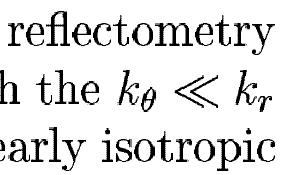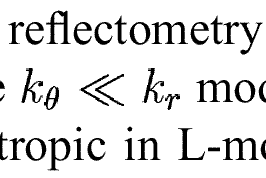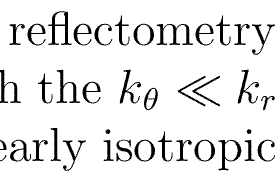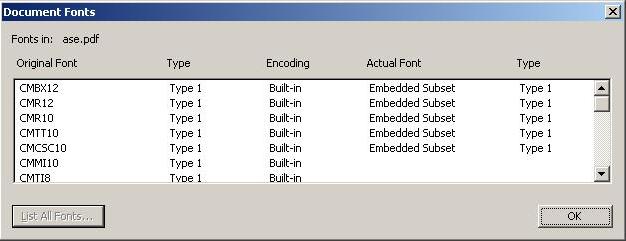behavior

(part of PSNFSS)
forces use of
Postscript fonts

embedded in PDF file

Recently many publishers have strict requirements about the fonts used in camera-ready paper submissions. Specifically, they require authors to substitute Adobe Postscript Type 1 fonts for any bitmap fonts (e.g., Postscript Type 3 bitmapped fonts, PCL fonts, MacOS bitmap fonts, Windows vector (outline) fonts). Being the Proceedings Chair of ACM PODS 2005, I set up the instructions for camera-ready submissions. In the process of editing the proceedings, I saw many common problems for authors to meet such a requirement. I wrote this page so that it may benefit other authors with similar problems. As always, comments are very welcome.
dvips command to produce PDF files using Type 1 fonts only
Authors should substitute Adobe Postscript Type 1 fonts for any
bitmap fonts (e.g., Postscript Type 3 bitmapped fonts, PCL fonts,
MacOS bitmap fonts, Windows vector (outline) fonts). Bitmapped fonts
display poorly on screen in PDF files and sometimes cause printing
problems. Whenever possible, please substitute Type 1 Postscript
fonts for Type 3 fonts in LaTEX files, then generate PS or PDF. LaTEX
FILES: PDFs generated from LaTEX files generally do not display well
on screen because the fonts that are generated from LaTEX for the PDFs
are bitmap images.
| Default LaTeX/dvips behavior |
 |
| Package times.sty (part of PSNFSS) forces use of Postscript fonts |
 |
| Outline fonts from AMS embedded in PDF file |

|

dvips command to produce PDF files using Type 1 fonts only
dvips -t letter -Ppdf -G0 -j0 mypaper.dvi -o mypaper.psCheck this link for more information about the options.
dvips optiondvips
command. Try the following:
dvips -t letter -Ppdf -G0 -j0 mypaper.dvi -o mypaper.psdvips, it will produce a file called:
missfont.logCheck if this file exists. If it does, it means your environment misses some fonts, and needs to install them. Check this link for more information.
* xfig "patterned" shapes are implemented with bitmap fonts.
Use "solid" shapes instead.
As an example, the following two xfig files both draw the same circle.
The file "pattern.fig" uses a "patterned" shape to draw the circle,
and its corresponding "pattern.pdf" is using a type-3 font. The file
"solid.fig" uses a "slide" shape to draw the circle, and its
corresponding "slide.pdf" is not introducing any type-3 font.A circle using a patterned shape (type-3 font introduced)
A circle using a solid shape (type-3 font not introduced)